Test Drive: Toyota Mirai Fuel Cell Vehicle
Japan hopes to revolutionize the auto industry once again with the world’s first consumer level hydrogen-powered engine

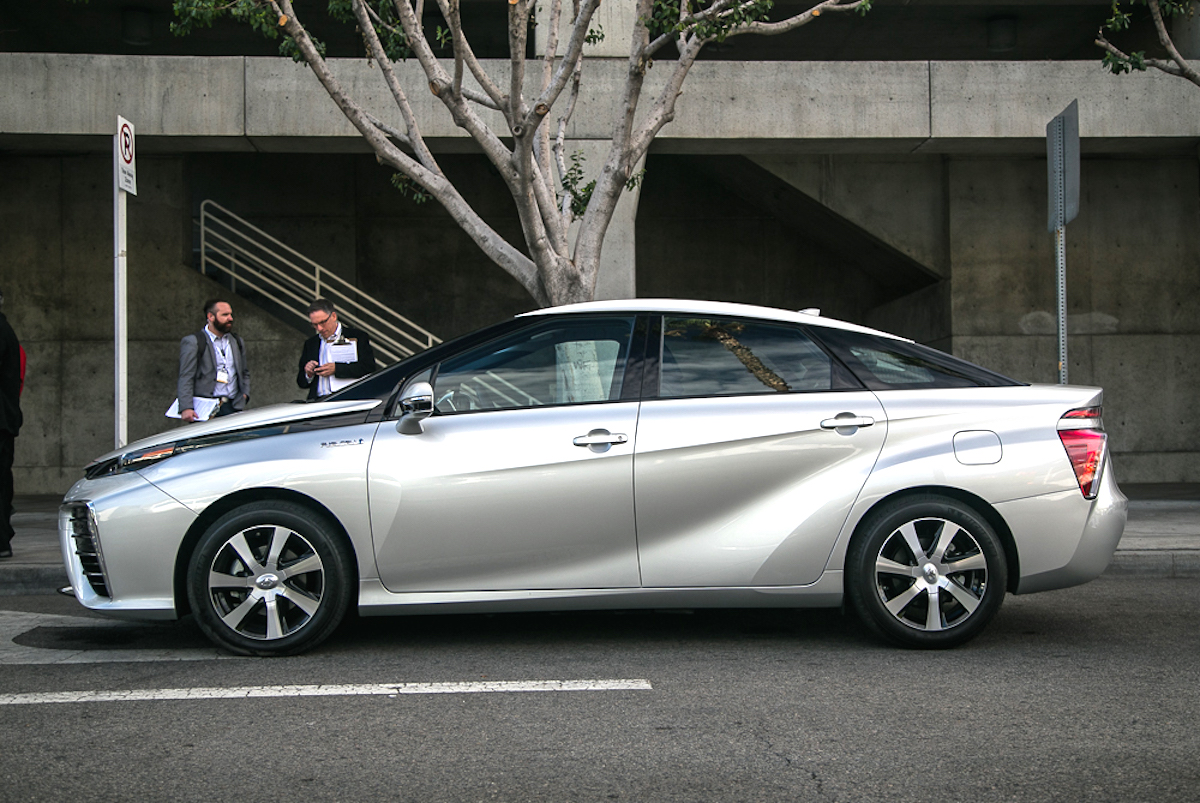
by Justin Kaehler
People often say the next generation of automobile must offer a “magic bullet” solution to our current energy needs, which really means we need vehicles that eliminate our need for gas completely. There’s a lot of talk about the myriad ways we’ll be powering our future cars; depending on who you ask, your next car will run on anything from algae-produced biodiesel to Ed Begley Jr.’s sense of self satisfaction. The truth is, future transportation will be powered by a slew of technologies including gasoline, pure electricity and, if Toyota has its way, the fuel cell.
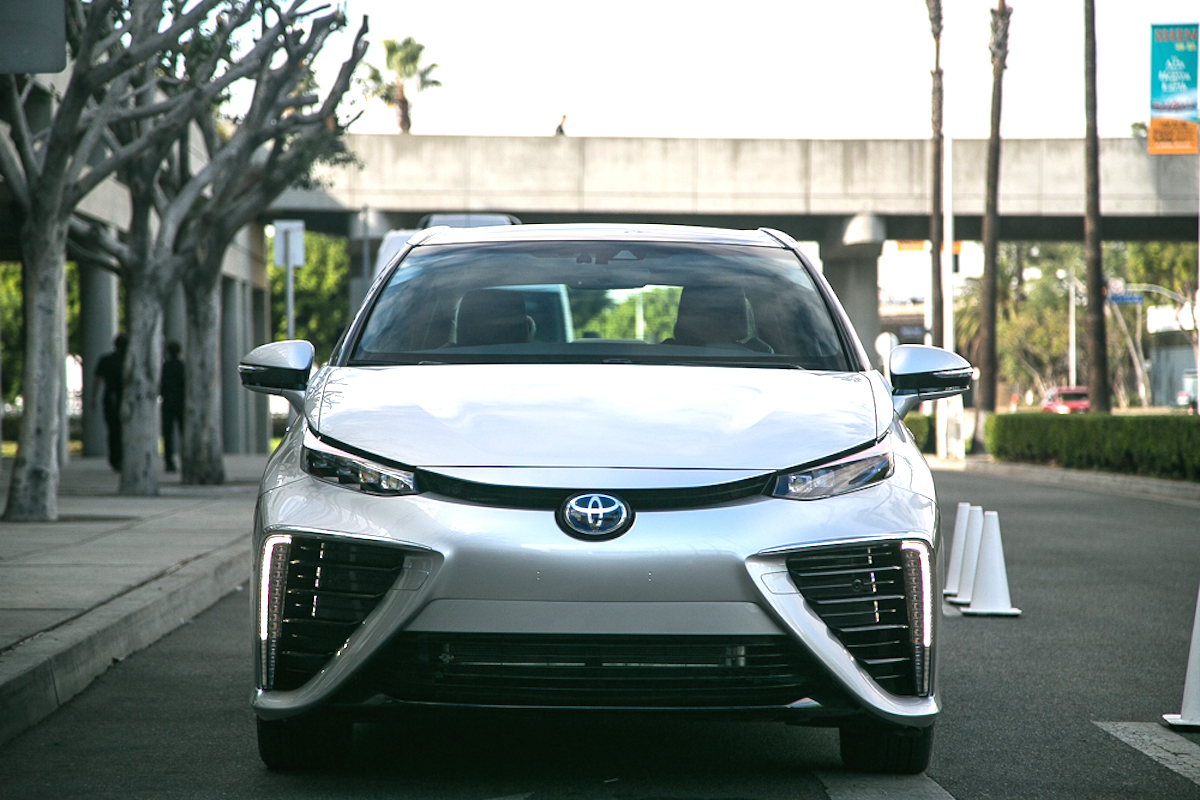
Toyota recently unveiled its new Mirai fuel cell vehicle (FCV) at the 2014 Los Angeles Auto Show, and with “mirai” being Japanese for “future,” it’s clear how they view this new machine. The FCV aims to match the convenience of the gasoline engine with the eco-friendliness of an electric vehicle. Instead of gas, the Mirai runs on hydrogen, which is stored in incredibly strong carbon-fiber tanks. This hydrogen is fed to a fuel cell stack underneath the seats where it mixes with oxygen to produce electricity. This electricity then powers an electric motor, which propels the Mirai like any other EV, and the only emission is pure water vapor.
In other words, the Mirai uses hydrogen in place of both gas and batteries. And, since hydrogen is the most abundant element in the universe, this can make for a very green and energy-independent future indeed. We were fortunate enough to get a first drive in the Mirai and, while our time behind the wheel was extremely brief, we learned volumes about the potential of this technology.
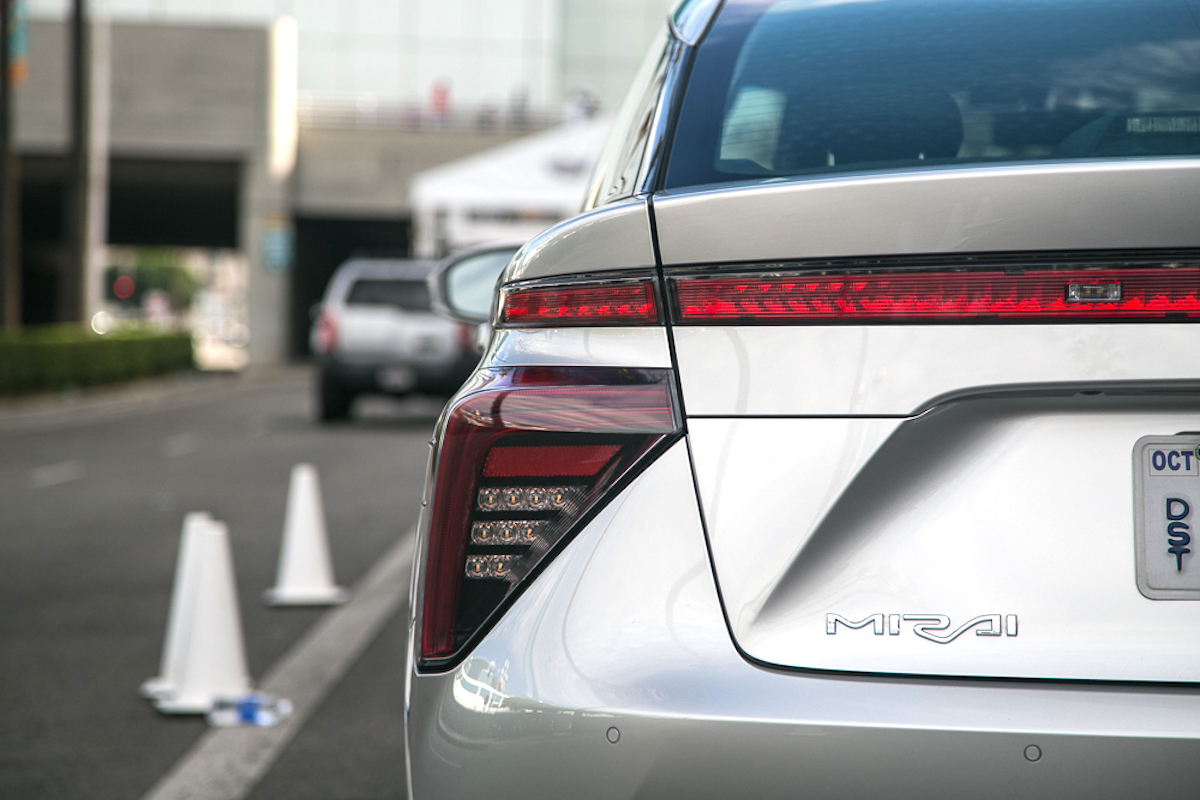
It’s shocking just how “normal” the Mirai feels—it lacks the golf cart sensation of other EVs. Sure, electric motors offer 100% torque at 0 rpm, but the power delivery feels unnatural. And both EVs and hybrids can’t hide the additional complexities powering their drive, especially under engine braking and application of the brakes. There’s a harshness to these power recovery systems, where even letting off the throttle can feel as if the car suddenly dropped a boat anchor. We couldn’t feel any of these power recovery systems kick in while driving the Mirai. Those systems are there, but they feel so seamless in comparison that it’s easy to forget that this isn’t a standard gas-powered vehicle. Pump a fake engine hum through the speakers and most drivers wouldn’t be able to tell the hydrogen-powered Mirai from any other gas-powered car.
Best of all, hydrogen promises the fast and convenient fill-ups of a standard vehicle. Just find a hydrogen station, drive up to the pump and refuel just as you would the car you drive now. Opt for the optional power take-off feature, and the Mirai will come with a plug outlet that can help it power your house.
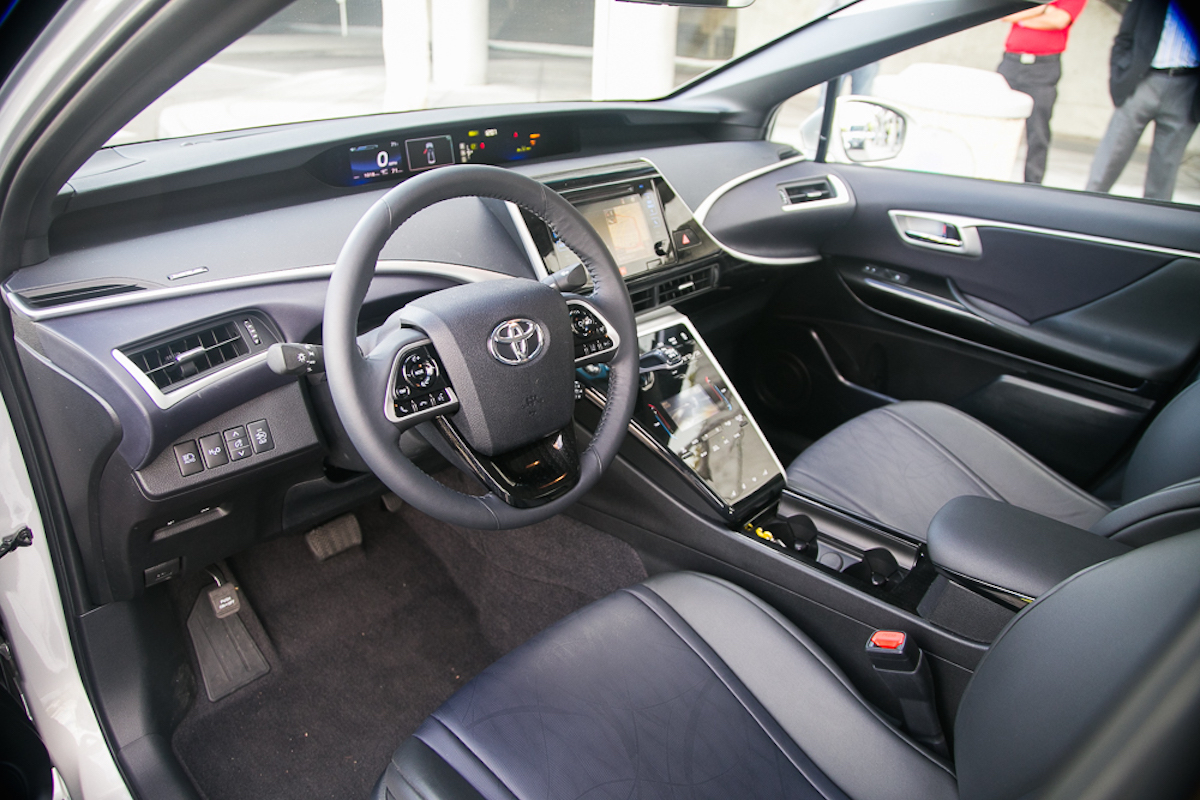
But it isn’t all sunshine and rainbows—or, clean air and water vapor—with the Mirai. Designed from the ground up as a dedicated FCV, Toyota had the opportunity to sculpt any shape they wanted, but it appears they wanted a sedan with some awkwardly applied styling accents.
The inside gets some nice features, like a multitude of color screens, capacitive touch controls and wireless phone charging, but the interior still feels like it was built to a price—that price being not a whole lot. That said, there’s nothing wrong with the interior, and with its SofTex seating and added sound insulation, it feels like a very nice Prius inside. (At $57,500 though, it’s double the price of a Prius, however.) Toyota is, however, promising a full 360-degree ownership experience, including 24/7 concierge service and free hydrogen fuel for up to three years.
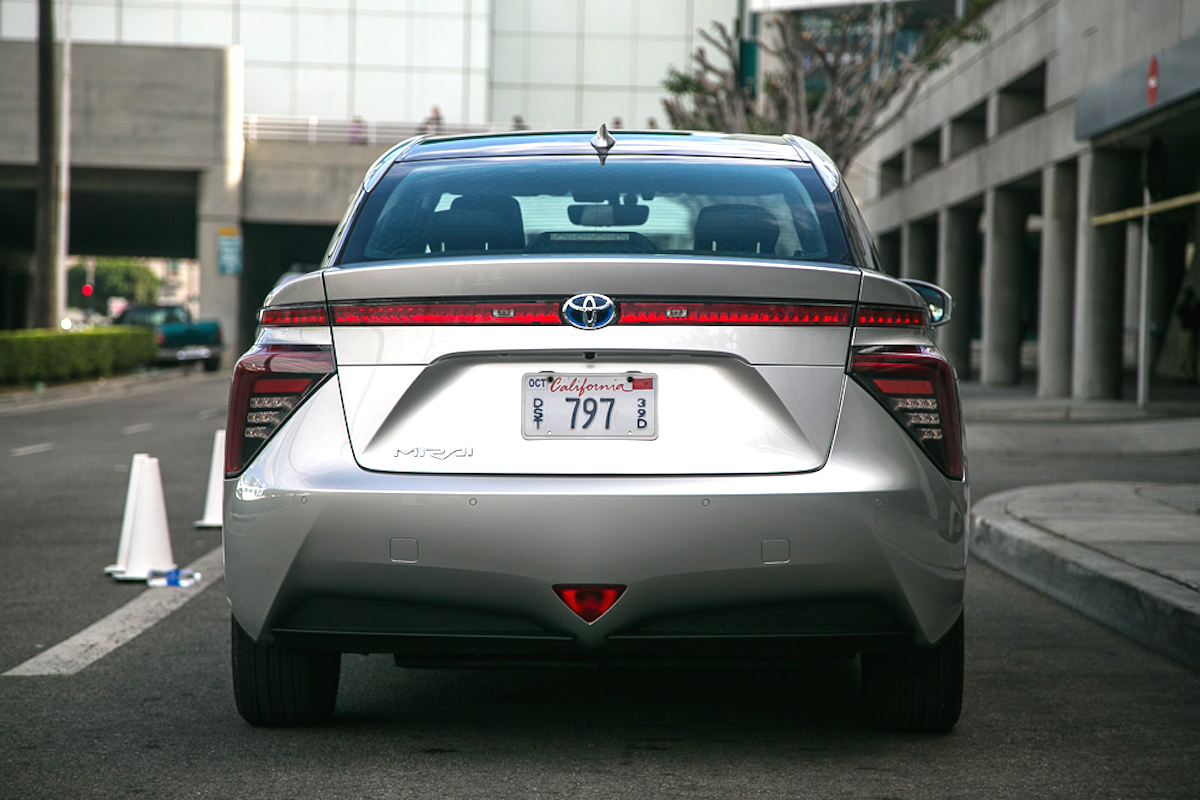
How consumers will get this fuel otherwise remains to be seen. Hydrogen stations aren’t plentiful, and only a handful are currently open to the general public. But Toyota is working to have 48 hydrogen stations open to California drivers by the end of 2016.
But the Mirai should not be discounted. We still remember when Toyota redefined the entire luxury market when it introduced its Lexus brand. And who in the late ‘90s would have thought that a quirky little economy car with a big battery and secondary, electric motor would not only shake up the automotive industry, but help define a movement? So, when Toyota goes about calling this funny looking sedan “the future,” perhaps we should all take note.
Toyota Mirai sales begin in Japan on 15 December 2014 and extend to the US mid-2015.
Images by Justin Kaehler












